A native to Indonesia, China, Australia, and India, the Hoya Bella may be your quintessential house plant. Known for its fragrance and star-shaped flowers, the Miniature Wax Plant is a popular choice for first-time growers as well as seasoned house plant aficionados.
Easy to care for, low maintenance requirements, and small, beautiful clusters of flowers make the Hoya Bella a carefree addition worth looking into for your budding house plant collection.
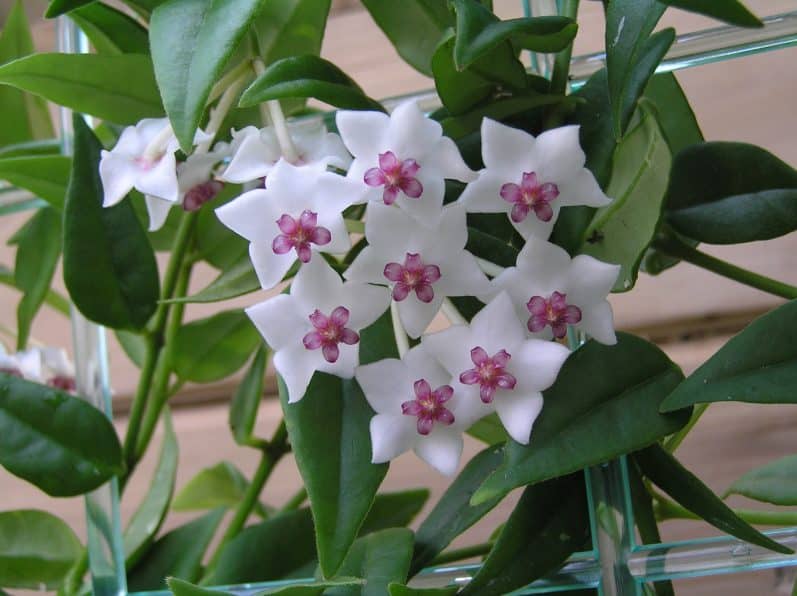
What to Know About the Hoya Bella
Hoya Bella is a small perennial plant capable of growing up to 3 feet in height and 24 inches in width. The leaves are shiny and waxy in texture and the star-shaped flowers form in clusters of pink and purple or white and purple, with a sweet honey fragrance.
Native to the tropical regions of Indonesia, China, Australia, and the Philippines the Hoya Bella is an epiphytic grower in its natural habitat, absorbing nutrients from the air and frequent deluges of rainwater. Requiring little in the way of maintenance, this plant needs very little in the way of watering, and fertilizing, and is resistant to pests and disease.
Hoya Bella Plant Basics:
| Common Name: | Miniature wax plant, wax vine, wax plant, porcelain flower |
| Botanical Name: | Hoya lanceolata subsp. bella |
| Plant Type: | Broadleaf evergreen |
| Size: | Max 3 ft. tall |
| Light: | Full sun in the morning indoors and partial shade outsideThis plant is a tropical hoya, which means it prefers gentle light. Put your plant where they will get bright, indirect light. |
| Soil: | Well-drained soil |
| Water: | Medium water requirements, more in the summer, less during its dormant season, allow it to dry between waterings but try not to let it dry completely out. |
| Vulnerabilities: | Typical house plant issues, diseases, and pests |
| USDA Growing Zones: | Zones 10, 11, 12 |
How to Care for a Hoya Bella Plant
Caring for the Hoya Bella is about as carefree as you can get. Don't overwater it, watch the light requirements and plant in and maintain the plant in rich, well-draining soil. See below for more in-depth care suggestions.

Hoya Bella Soil Requirements
Hoya Bella plants prefer well-draining soil that is rich in organic matter. Here's what you need to know about soil requirements for this plant:
- Soil type: These plants prefer a loose, well-draining soil mix that allows excess water to drain away from the roots. A good soil mix can include a combination of peat moss, perlite, and tree bark, sand and charcoal; these amendments will open the soil up.
- Soil pH: Hoya Bella plants prefer slightly acidic to neutral soil, with a pH range of 6.0 to 7.0. Avoid using soil mixes that are too alkaline, as this can cause nutrient deficiencies and other issues.
- Soil amendments: Hoya Bella plants benefit from organic matter such as compost or well-aged manure, which can improve soil fertility and moisture retention. You can also add a slow-release fertilizer to the soil mix to provide nutrients over time.
Watering Requirements
When it comes to watering a Hoya Bella plant, it's important to strike a balance between providing enough moisture to keep the plant healthy and avoiding overwatering, which can lead to root rot. Hoya Bella plants prefer well-draining soil that is moist but not waterlogged.
During the growing season (spring and summer), water your Hoya plant when the top inch of soil feels dry to the touch. Water thoroughly, making sure that the water drains out of the bottom of the pot. Avoid letting the plant sit in standing water as this can lead to root rot.
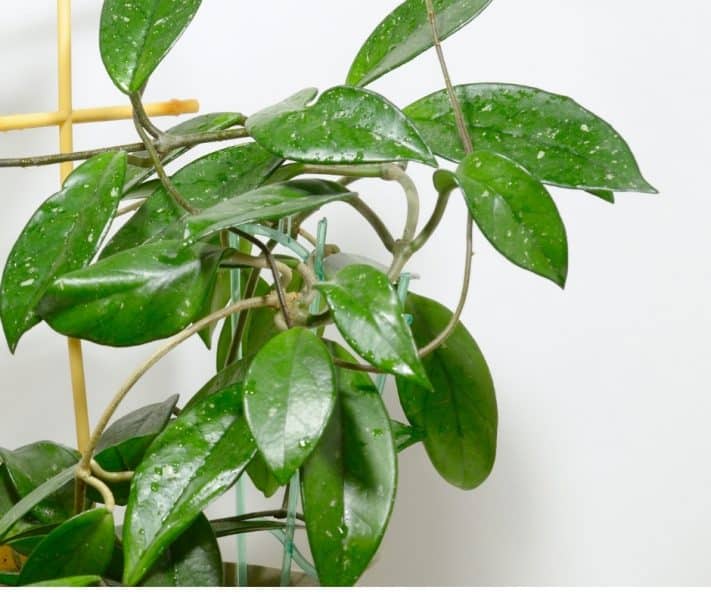
During the winter months, reduce the watering frequency, and allow the soil to dry out more between waterings but be careful not to let the plant become completely dry out.
It's better to be underwater than to overwater this plant. If in doubt, wait until the soil has dried down to about an inch below the soil before watering again.
Hoya Bella Light Requirements
Hoya Bella plants require bright, indirect light to thrive. They can tolerate some shade, but ideally the light needs to mimic their natural habitat of dappled , indirect sunlight.
To provide your plant with the right amount of light, place it near a window that gets indirect sunlight, early morning sun, or later evening sun. You can also use curtain-filtered light as long as it doesn't get too hot.
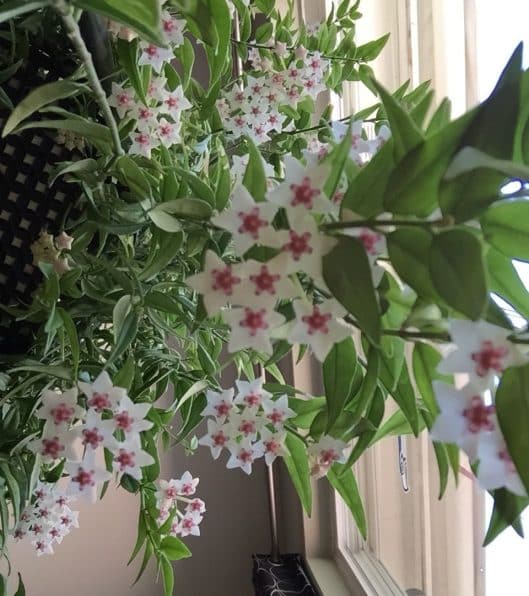
It's important to note that Hoya Bella plants can become leggy or straggly if they don't receive enough light. If you notice that your plant is stretching towards the light or its leaves are turning yellow, it may be a sign that it needs more light.
Hoya Bella Temperature & Humidity
Hoya Bella prefers moderate temperatures between 60-80°F (15-27°C) and moderate to high humidity levels. They can tolerate some fluctuations in temperature but avoid exposing them to cold drafts or sudden temperature changes, which can stress the plant.
Maintaining consistency in temperature and humidity is important for this plant to thrive, by keeping it in a room that doesn't fluctuate in these two areas will create the best results. Keep it away from air conditioning vents or drafts.
You can increase the humidity around the plant by using a humidifier, placing a tray of water near the plant, or misting the leaves regularly with a spray bottle.
If the air in your home is particularly dry, you can add small rocks in the pot's saucer and add water to keep the humidity level up around the plant.
If you begin to notice brown or dry leaf edges it may be a sign that the air around the plant is too dry, and you should increase the humidity levels.
Fertilizer Requirements
Hoya Bella plants benefit from regular fertilization during the growing season (spring and summer) to promote healthy growth and blooming. Use a balanced, water-soluble fertilizer formulated for houseplants, and dilute it to half-strength to avoid over-fertilizing.
Apply the fertilizer once a month during the growing season, following the instructions on the package for the correct amount and method of application. Avoid fertilizing your Bella plant during the winter months when it is in a dormant period.
Over-fertilization can lead to the buildup of salts in the soil, which can damage the plant's roots. If you notice that the plant's leaves are turning yellow or the tips of the leaves are turning brown, it may be a sign of over-fertilization. Flush the soil with water to remove excess fertilizer and adjust your fertilization schedule accordingly.
There are several ways you can fertilize your Hoya Bella, but keep in mind it's NOT a heavy feeder, and it's very important not to feed it during its dormancy period.
- Light fertilizing once per month during the growing season
- Twice per year use a liquid fertilizer during the growing season
- Diluted organic fertilizer 4 times per growing season.
Hoya Bella Pruning Method
Because of the wild growing spirit of the Hoya Bella pruning is an important part of this plant's care, as it helps to maintain the plant's shape, promote healthy growth, and encourage blooming.

Here are the steps to prune a Hoya Bella plant:
- Identify the parts of the plant that need pruning, such as dead or damaged stems, or overgrown sections that are making the plant look lopsided.
- Using a clean, sharp pair of pruning shears, make a clean cut just above a leaf node (the point where a leaf attaches to the stem) to remove the unwanted section.
- For leggy or straggly Hoya Bella plants, pinch back the tips of the stems to encourage branching and promote bushier growth.
Hoya Bella plants are slow-growing, so avoid pruning too much at once or too frequently, as it can stunt the plant's growth and blooming.
How to Propagate Hoya Bella
Hoya bella plants can be propagated easily through stem cuttings. Here's how to propagate a Hoya Bella plant:
- Using a clean, sharp pair of pruning shears, take a stem cutting from a healthy, mature plant. Choose a stem that is at least 4-6 inches long and has several sets of leaves.
- Remove the bottom set of leaves from the stem, leaving a few inches of bare stem at the bottom.
- Dip the cut end of the stem in rooting hormone powder to promote root growth.
- Plant the stem cutting in a small pot filled with a well-draining potting mix, and water it lightly.
- Cover the pot with a clear plastic bag or a plastic dome to create a humid environment, which will help the cutting to root. Place the pot in a bright, indirect light location, but avoid exposing it to direct sunlight.
- Check the cutting regularly for signs of rooting, such as new growth or resistance when gently tugged. Once the cutting has rooted, remove the plastic covering and begin to care for it as you would a mature plant.

Be patient and avoid overwatering or disturbing the cutting while it is rooting.
Hoya Bella Varieties
Hoya Bella belongs to the Hoya genus, which is a diverse group of plants with over 200 species.
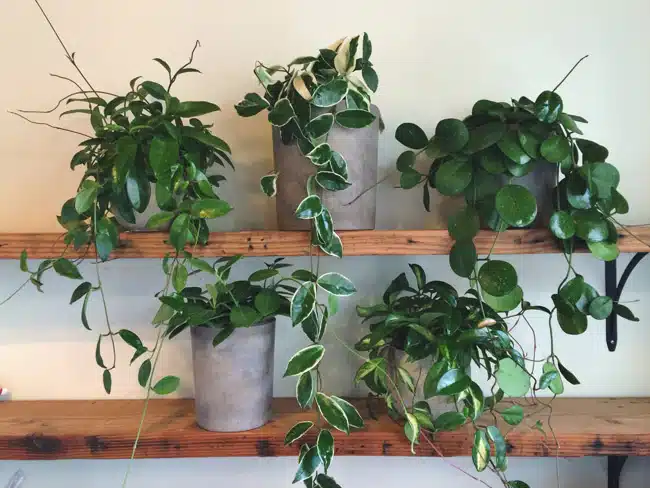
Some of the other Hoya species that are popular among houseplant enthusiasts include:
Hoya kerrii: Also known as the sweetheart plant, Hoya kerrii is a popular succulent vine with heart-shaped leaves that are often sold as single-leaf cuttings.
Hoya carnosa: Commonly known as a wax plant, Hoya carnosa is a classic houseplant with glossy, waxy leaves and clusters of fragrant pink or white flowers.
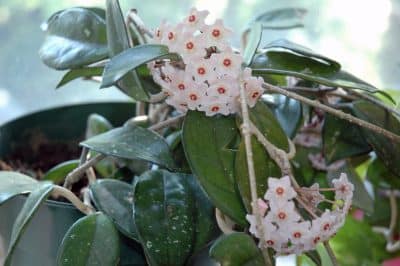
Hoya linearis: Hoya linearis is a trailing plant with slender, grass-like leaves and clusters of small, star-shaped white flowers.
Hoya pubicalyx: Hoya pubicalyx is a fast-growing vine with leathery, lance-shaped leaves and clusters of fragrant pink or red flowers.

Many of these Hoya types are prized for their attractive foliage and delicate, fragrant flowers. They have similar care requirements, such as bright, indirect light and moderate watering, and can be propagated through stem cuttings. However, each species has its own unique growth habit and flower color and shape, making them a diverse and interesting addition to any houseplant collection.
Here are a few more:
Hoya Bella Luis Bois: This cultivar has dark green, glossy leaves with a wavy, ruffled edge. It produces clusters of delicate, star-shaped white flowers with a sweet fragrance.
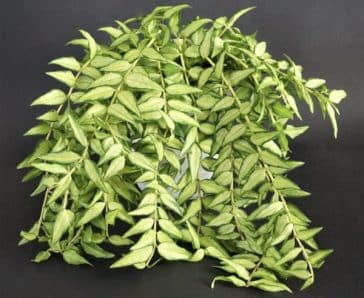
Hoya Bella Variegated: This Hoya has green leaves with creamy white variegation along the edges. It produces clusters of small, fragrant white flowers.
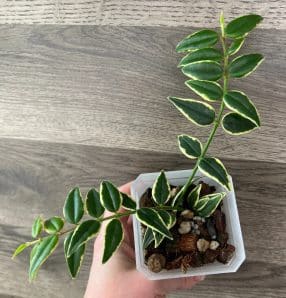
Hoya Bella Albomarginata: A Hoya Bella cultivar with green leaves and a thin, white margin around the edges. It produces clusters of fragrant white flowers with a pink or yellow center.

Hoya Lanceolata Bella: This Hoya species has lance-shaped leaves with a wavy edge and clusters of fragrant, star-shaped pink or white flowers. It has a trailing growth habit and can be trained to climb up a trellis or support.
Common Problems with Hoya Bella Plants
Hoya bella plants are generally easy to care for, but like all plants, they can sometimes experience issues. Here are some common problems that you may encounter:
Growing
If your Hoya plant isn't growing well, it may be due to insufficient light or water. Make sure your plant is getting enough bright, indirect light, and water it thoroughly when the top inch of soil feels dry. Also, avoid over-fertilizing your plant, as this can cause stunted growth or leaf burn.
Diseases
Hoya Bella plants are generally resistant to most plant diseases, but they can occasionally develop fungal or bacterial infections. Signs of disease include yellowing or wilting leaves, brown or black spots on the leaves, or a mushy texture to the stem.
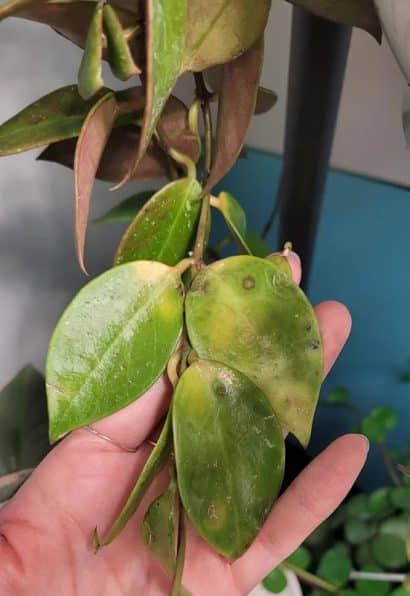
To prevent disease, make sure your plant is growing in well-draining soil and avoid overwatering. If you notice signs of disease, remove affected leaves or stems and treat the plant with a fungicide or bactericide as directed.
Pests
These plants can attract common houseplant pests such as spider mites, mealybugs, and scale insects. These pests can cause leaf yellowing or drop, stunted growth, and sticky residue on the leaves or stems. To prevent pests, regularly inspect your plant and isolate any new plants before adding them to your collection. If you notice pests, remove them manually or treat the plant with a horticulture oil or insecticidal soap as directed.
Interesting Facts About the Hoya Bella
Needing a sufficient amount of time to mature, it can be 5-7 years before you get to enjoy the fragrance of the flowers. Of the 200 plus types of Hoyas each with a certain something that makes them unique, the Hoya Bella is worth the wait. Take care of this miniature porcelain beauty and your efforts will be rewarded in no time.
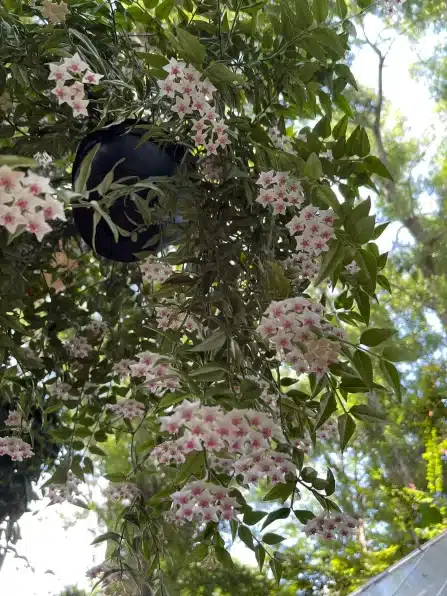
FAQ’s
How do I get Hoya Bella to flower?
To get your Hoya Bella to bloom will first take some patience, to allow the plant to mature, but also you will need to assure its health by following the care guides above. Sufficient bright, indirect light, proper watering, and fertilization will help your plant flower at its earliest possible time.
Is Hoya Bella an indoor plant?
Yes, Hoya Bella is generally thought of as a house plant, but in the right conditions can be grown on a porch, or balcony. The main thing to remember is they don’t like direct sun.
Are Hoya Bella plants easy to grow?
Hoya Bella is considered to be a low-maintenance and easy to grow houseplant. But along with that a certain amount of patience is needed due to their slow growth.
Is Hoya Bella climbing or hanging?
Hoya Bella is not much of a climber, and prefers to hang out in a basket. However, they can be tied or woven through a trellis.

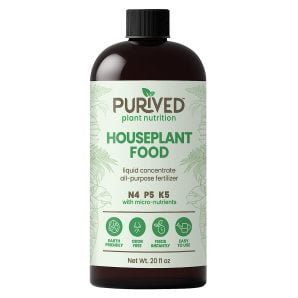
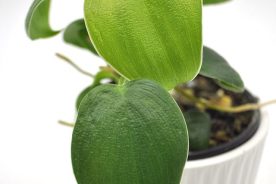

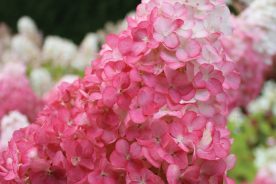

No Comments